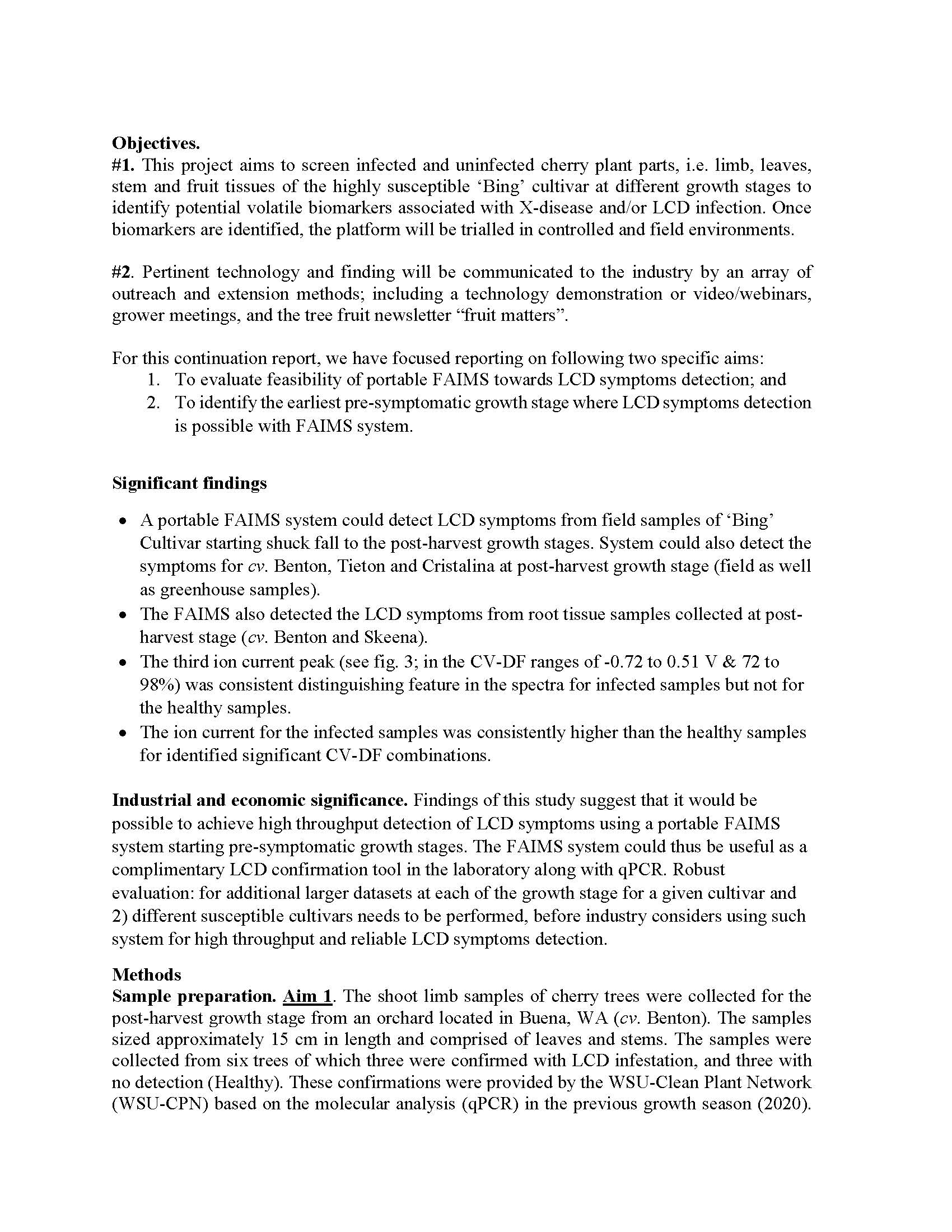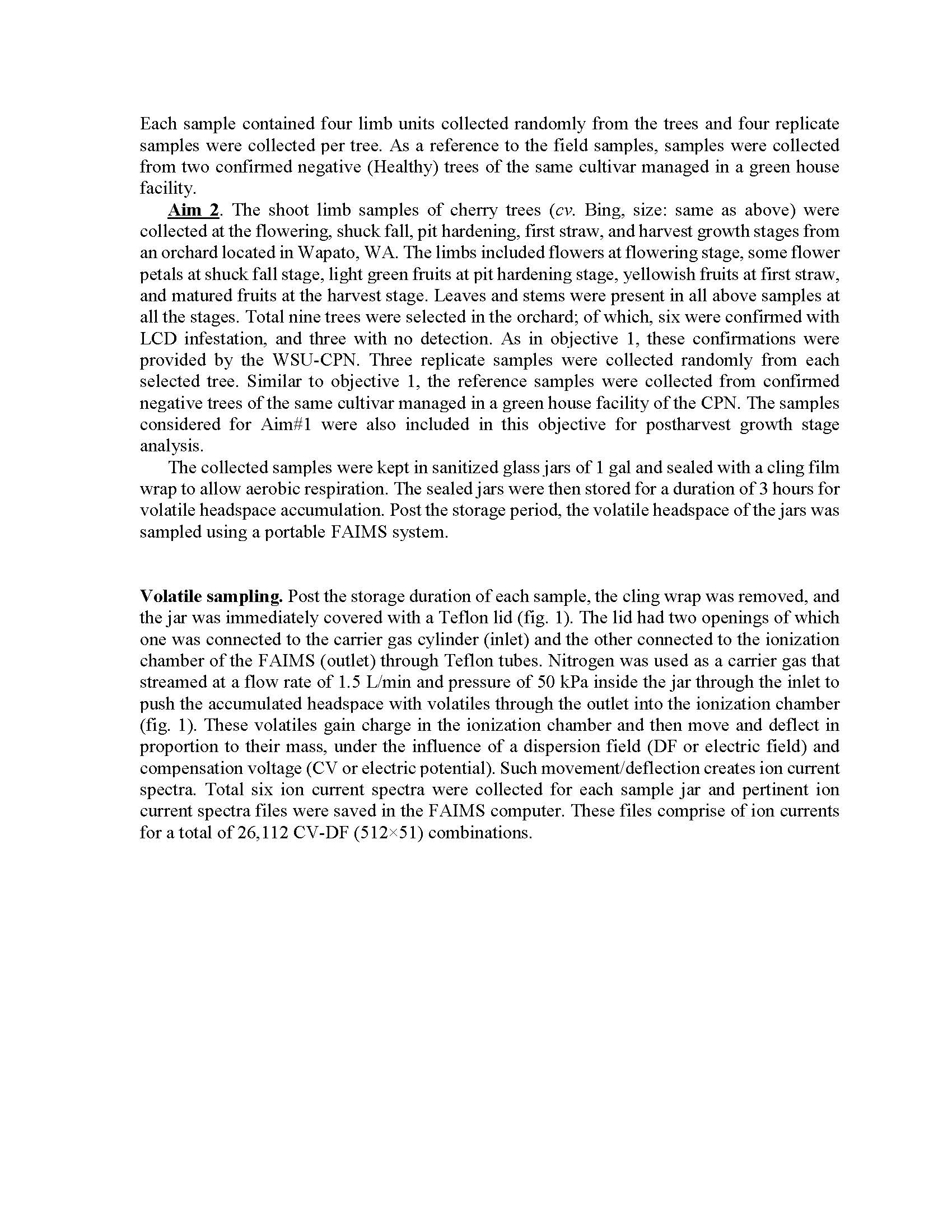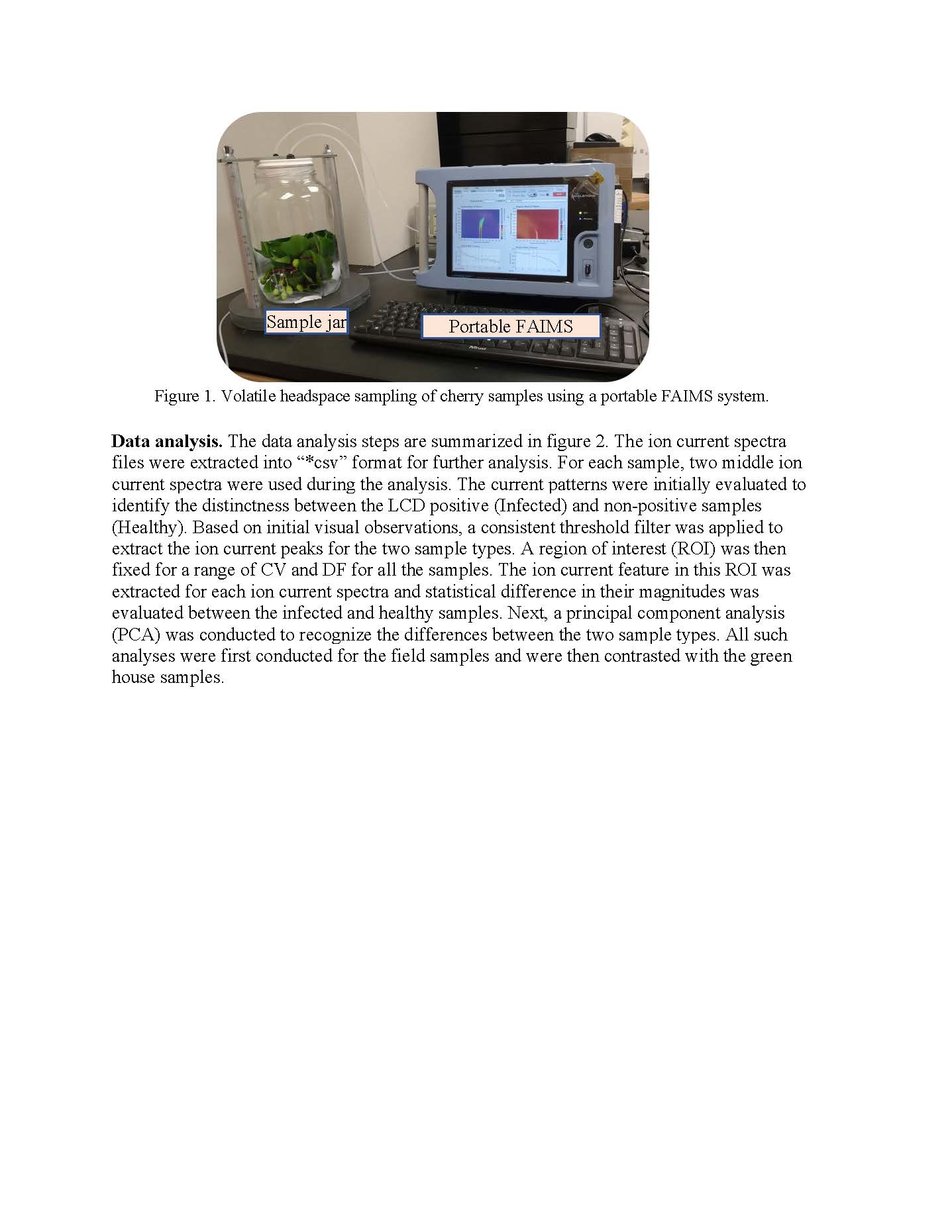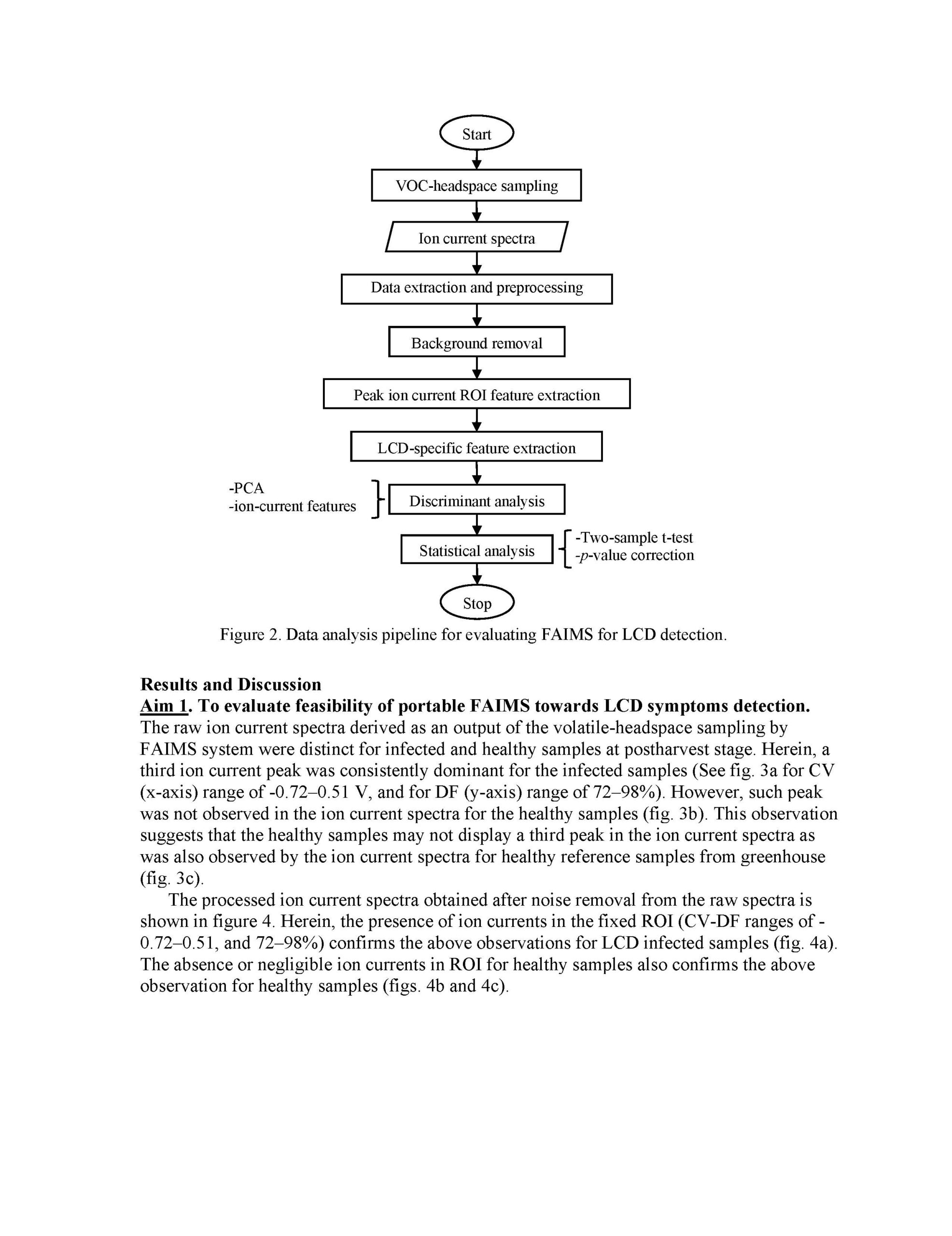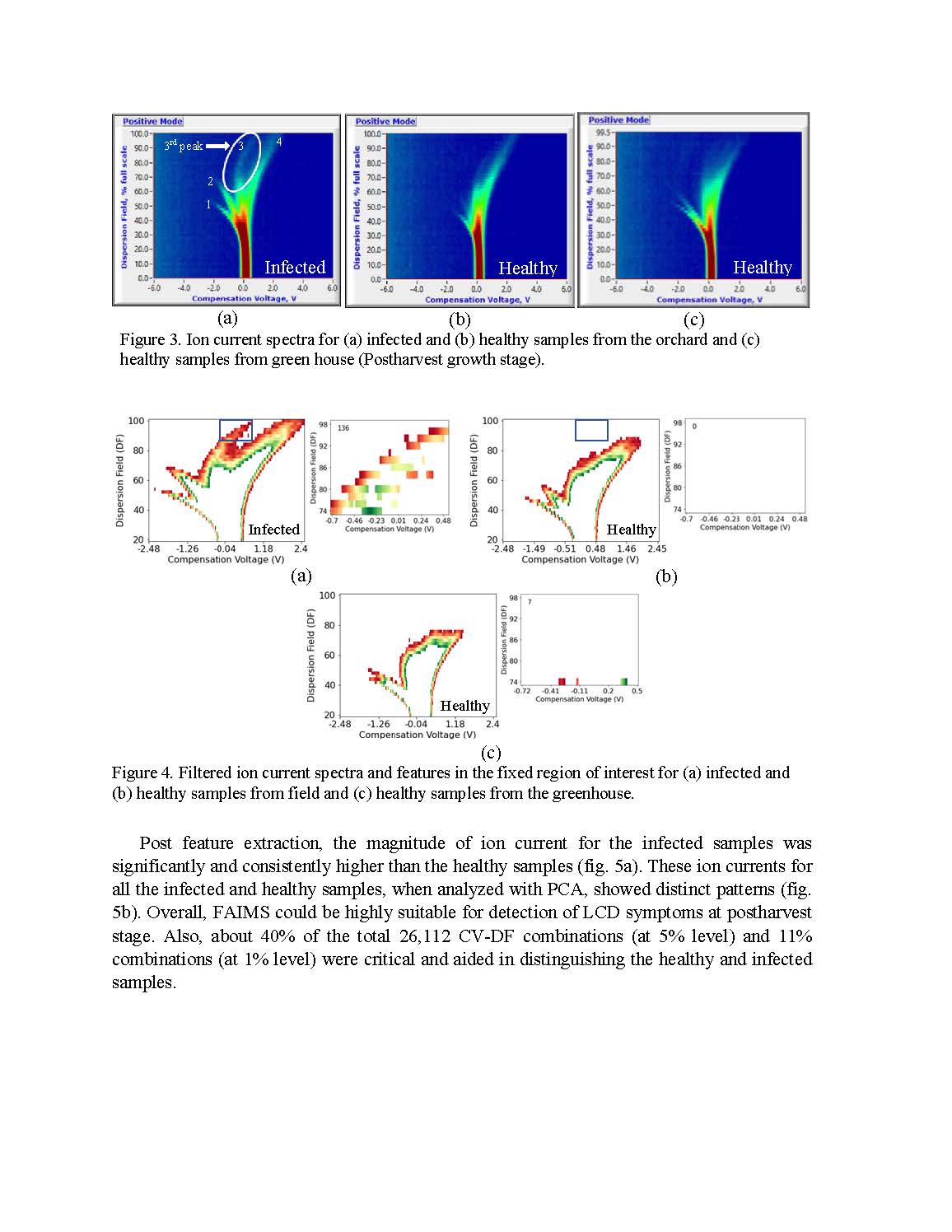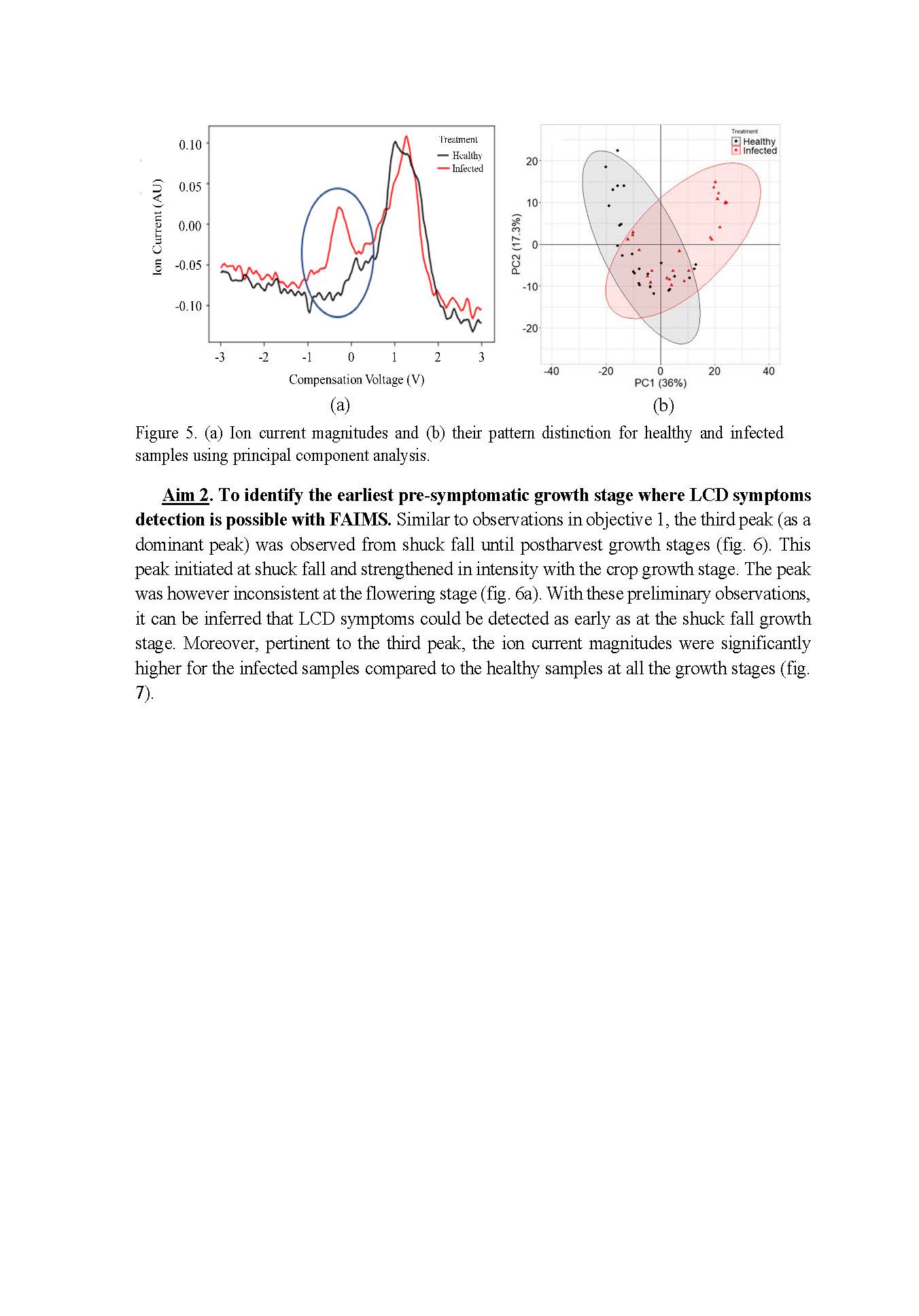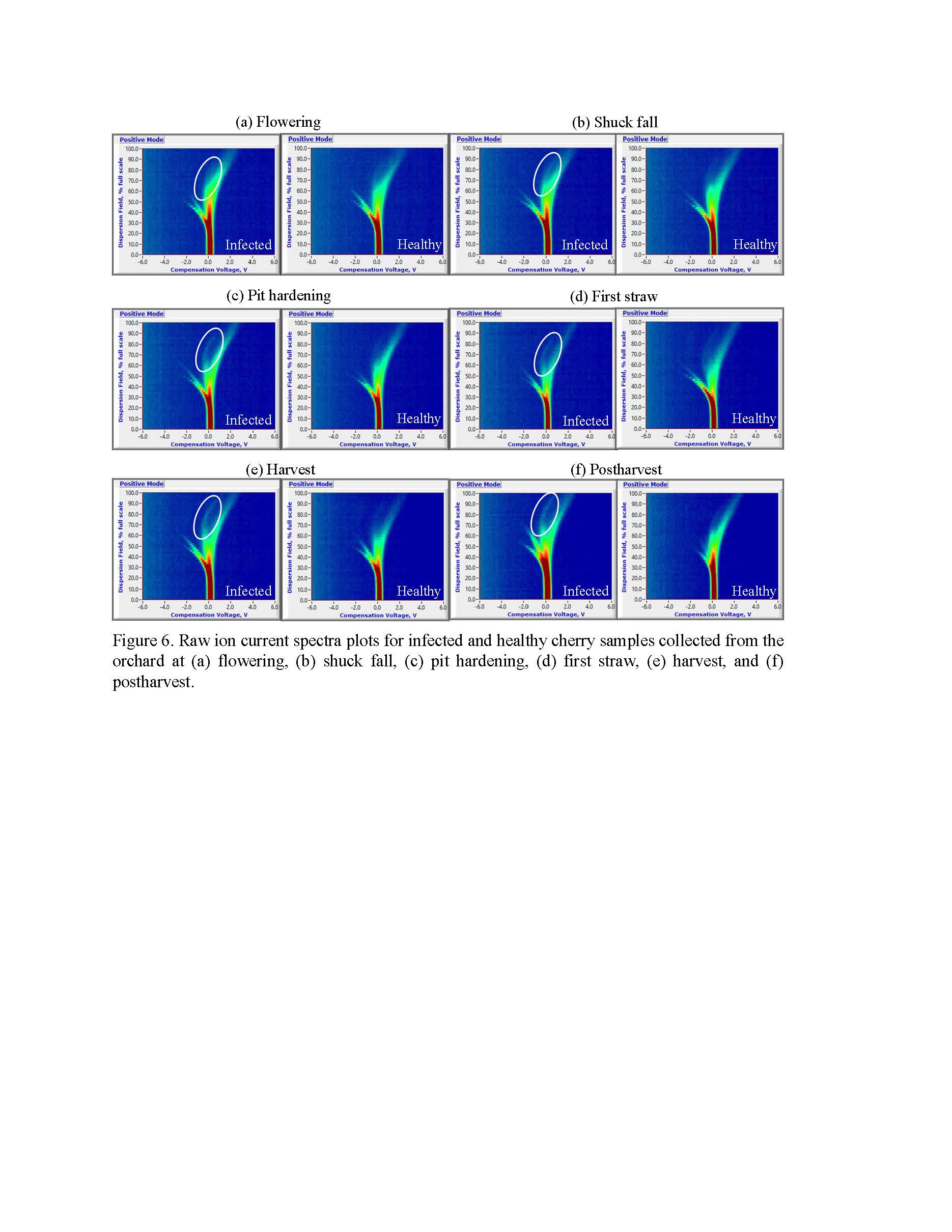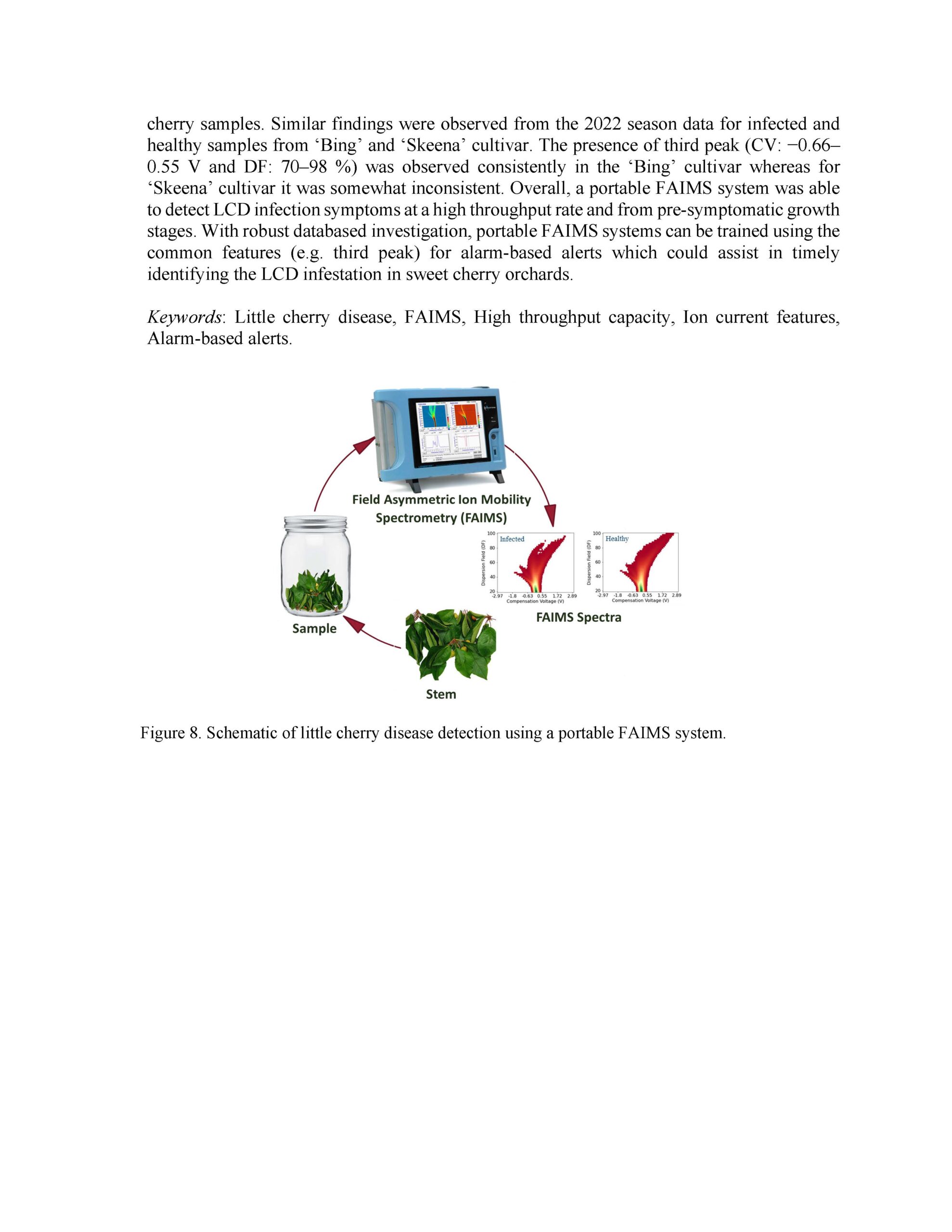Towards identification of LCD linked volatile biomarkers
Author: Lav R. Khot
Published: 2023
Summary: Little cherry disease (LCD) has been critically affecting the sweet cherry (Prunus avium) industry in the Pacific Northwest. Therefore, this study aimed at evaluating a high throughput field asymmetric ion mobility spectrometry (FAIMS) system towards early detection of the LCD infection of sweet cherry. Total fifteen trees were selected in two cherry orchards at Wapato, WA (cv. Bing) and Buena, WA (cv. Benton) which were confirmed as infected and healthy by the WSU Clean Plant Network. Shoot samples that included flowers, leaves, fruits, and stems were collected from the selected trees in each of the six growth stages: flowering, shuck fall, pit hardening, first straw, harvest and postharvest. Collected samples were stored in 1-gallon glass jar for three hours for volatile headspace accumulation. Post-storage period, accumulated headspace was sampled with FAIMS, and ion current spectra were acquired for each sample jar. A consistent presence of third ion current peak was observed in the spectra for infected samples but not for the healthy samples. Such infection-specific peak was observed from as early as shuck fall growth stage. Those peaks were present for compensation voltage (CV) range of −0.72–0.51 V and dispersion field (DF) range of 72–98% for all the growth stages. Pertinent to those peaks, the ion current for infected samples was significantly higher compared to healthy samples (Two-sample t-test, p < 0.05). Such observations were also supported by the healthy samples collected from greenhouse grown trees. A Principal component analysis showed the distinctness in the patterns formed by the infected and healthy cherry samples. Similar findings were observed from the 2022 season data for infected and healthy samples from ‘Bing’ and ‘Skeena’ cultivar. The presence of third peak (CV: −0.66–0.55 V and DF: 70–98 %) was observed consistently in the ‘Bing’ cultivar whereas for ‘Skeena’ cultivar it was somewhat inconsistent. Overall, a portable FAIMS system was able to detect LCD infection symptoms at a high throughput rate and from pre-symptomatic growth stages. With robust databased investigation, portable FAIMS systems can be trained using the common features (e.g. third peak) for alarm-based alerts which could assist in timely identifying the LCD infestation in sweet cherry orchards.
Keywords:


